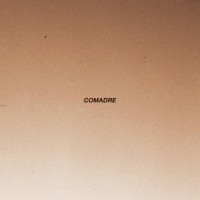In most introductory film theory classes, students learn about something called the "auteur theory." It holds that the director is the primary creative force or "author" of a film. It has been modified in recent years to focus more on filmmakers who take on multiple roles, like writer/directors such as Kevin Smith and Quentin Tarantino. However, the theory is frequently debated due to the sheer volume of creative roles that exist in film. Costume designers, cinematographers, composers, and even actors all have a hand in the final product, and the overall tone and image of a film (this is recently evidenced by multiple critics noting the lack of Sally Menke's editing hand in Tarantino's latest film Django Unchained). While, the theory may not hold for film, it may hold true for Bay Area mainstays Comadre, especially on their latest self-titled album. Looking at the liner notes, there is exactly one outside name (band photographer and trumpeter on "Drag Blood" Lev Perry). All the instruments were played by the band's five members' all the production was done by guitarist Jack Shirley (at Shirley's own Atomic Garden Studios no less); even the photography and layout were done by vocalis, Juan Gabe. The end result is an album 100% made on Comadre's terms in both sound and appearance, and it's 100% fantastic.
While most of Comadre's previous work is a frantic, fast paced cacophony, their latest effort is far more mellow, perhaps even poppy. While tracks like "Cold Rain" could fit nicely on their older work, there's a slew of pieces breaking new ground for the band. "Summercide" channels the band's more traditional emo influences right down to the piano and organ rounding out the sound. Branching out further, the band feature a heavy western sound on "Drag Blood," which could be a modern soundtrack to an outlaw gunfight. The oddity of the record is that the more traditional songs (featuring heavier melody and more standard verse/chorus structure) are the more unusual for Comadre, yet they are no less fitting or powerful.
Perhaps more than a particular sound, Comadre's hallmark has been meticulous attention to detail. Taking most of 2012 to write and record their self-titled, Comadre set no schedule and held themselves to no expectations. This could easily have resulted in an album of strange, self-indulgent experimentation; the closest the band let themselves come is "Untitled" which clocks in at 3:31 (incredibly long by Comadre standards) and features crashing percussion, organs and even a saw but no vocals. But Comadre craft the album with masterful form, never allowing anything to stray too far, or allowing any track to alienate itself from the album as a whole. While the album definitely highlights the journey, with each track forming its own sound and narrative, the album clearly has a destination which keeps new sonic elements and styles from frivolity and meandering about.
Even though it's vastly different from their previous work, it's hard to call 2013's self-titled record experimental, as Comadre have long been known for experimenting. The band itself have always felt like a bit of an experiment; compiled from the remnants of other Redwood City bands, featuring two sets of siblings, releasing series of free mixtapes (often with new and unreleased material) and focusing on a tireless DIY ethic (it's like an anti-Oasis). Their self-titled album reflects this makeup perfectly. This is an album made by people who don't want to rehash what they've been doing for 15+ years and are just as willing to try new things as they are to admit when something doesn't work. It's an album that is just as diverse as it is focused and it's an amazing way to start 2013.
